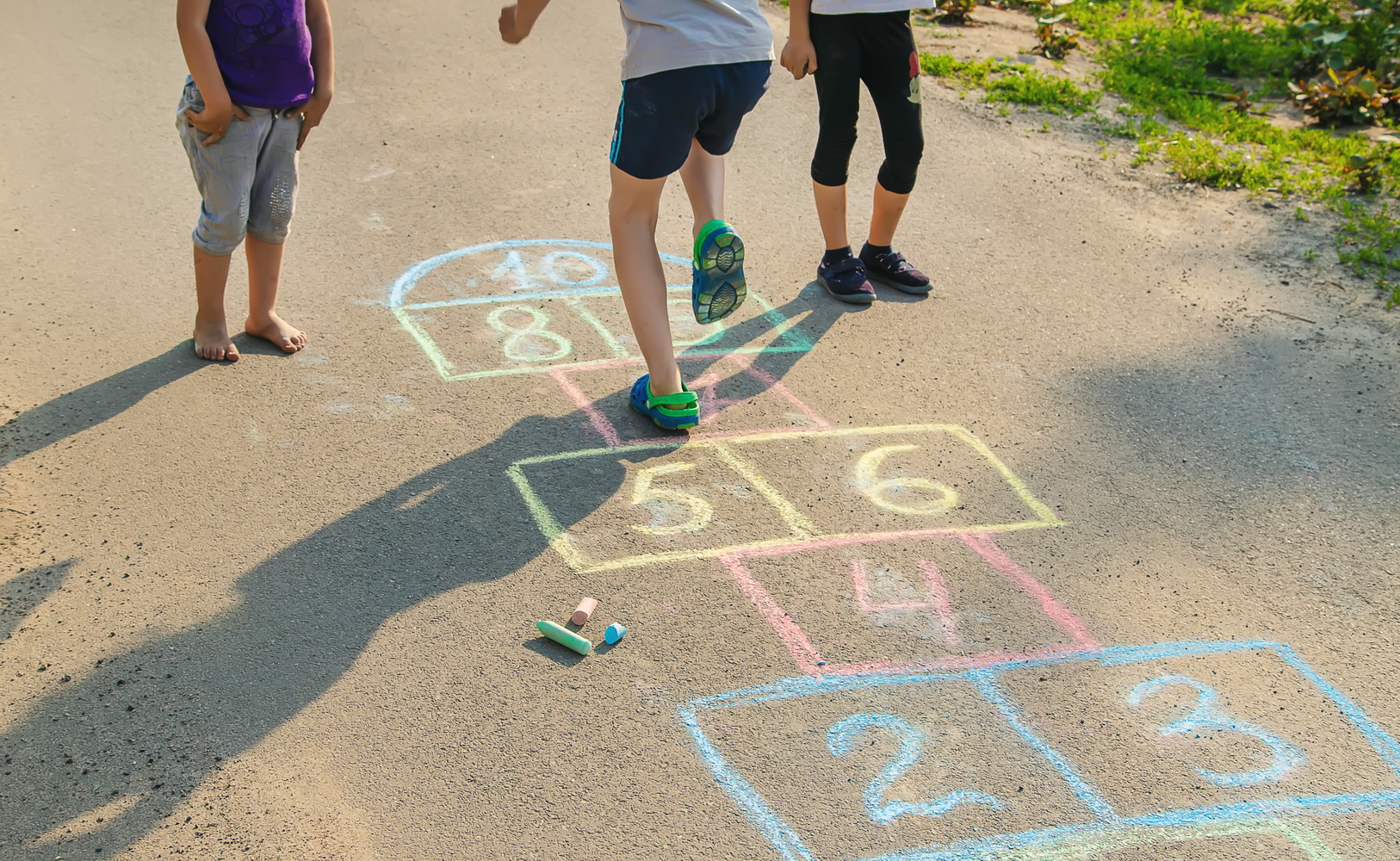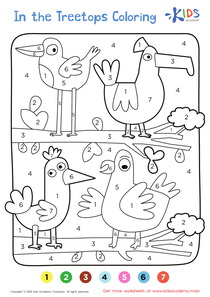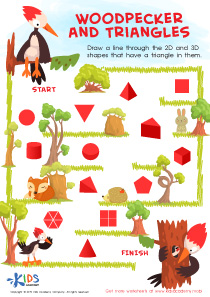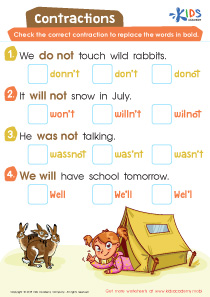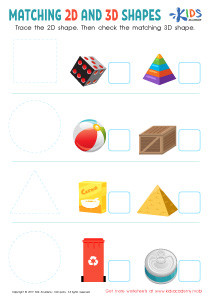Shape Recognition Grade 1 Fractions of Shapes Worksheets
4 filtered results
-
From - To
Enhance your first grader's understanding of fractions and shapes with our "Shape Recognition Grade 1 Fractions of Shapes Worksheets." These engaging and colorful worksheets are designed to help young learners identify, compare, and work with fractions through fun shape-based activities. Each worksheet presents opportunities to recognize and partition shapes into equal parts, fostering essential math skills aligned with first-grade standards. Interactive exercises ensure that learning fractions is both enjoyable and informative. Perfect for classroom practice or at-home enrichment, our worksheets provide a foundational step towards mastering fractions, combining visual learning and practical application for a comprehensive educational experience.
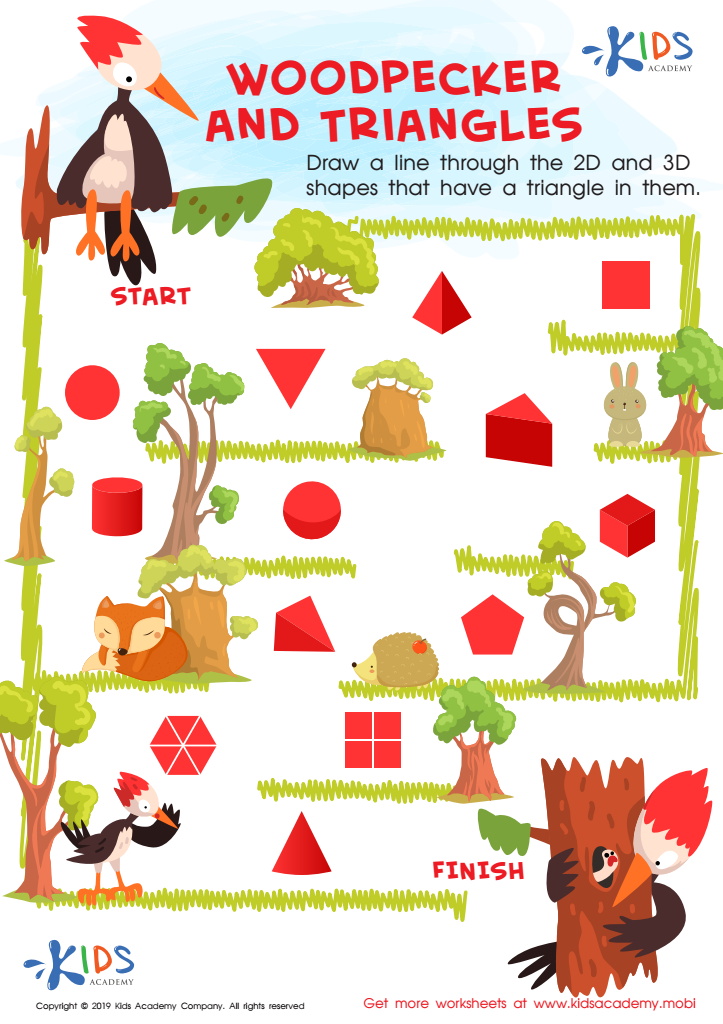

Woodpecker and Triangles Worksheet
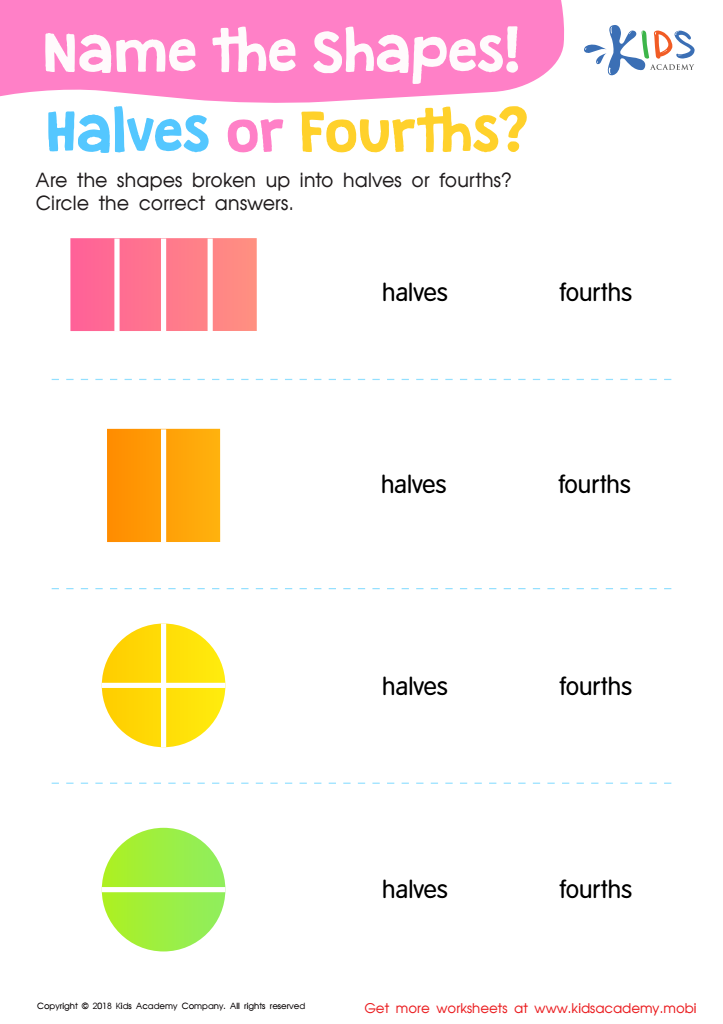

Name the Shapes Halves or Fourths? Worksheet
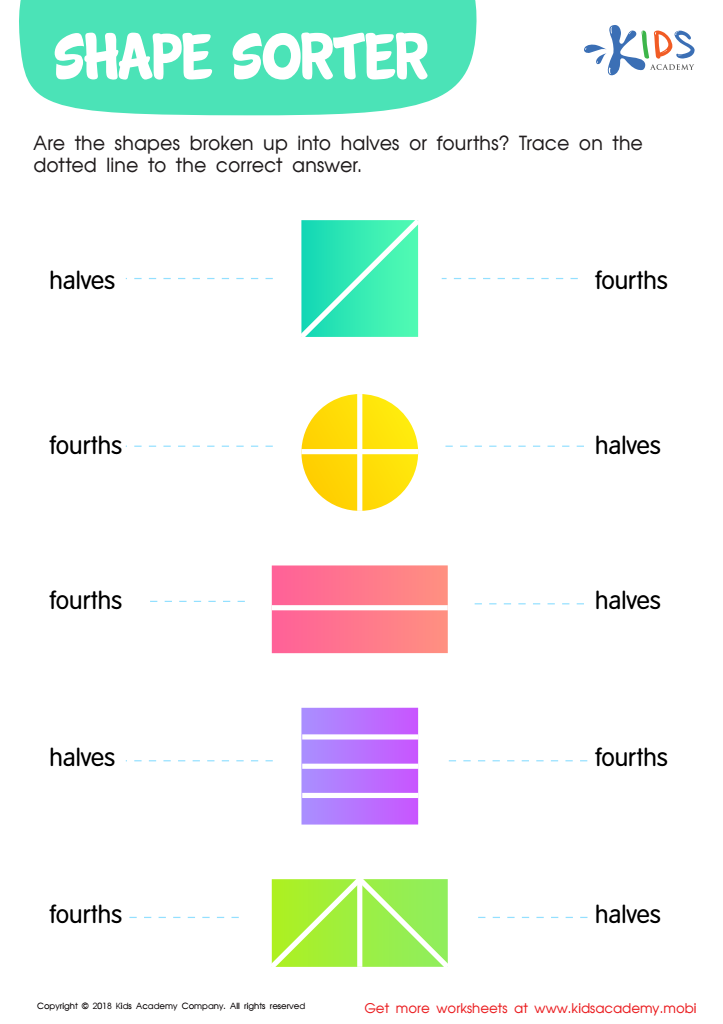

Shape Sorter Worksheet
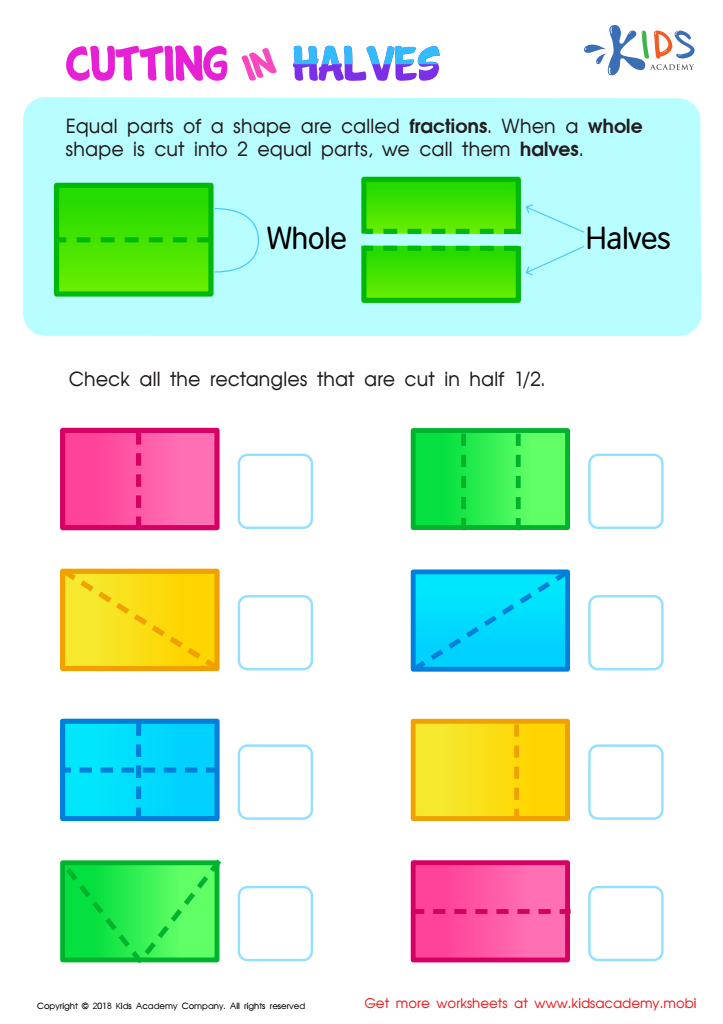

Cutting in Halves Worksheet
Understanding shape recognition and fractions of shapes in first grade lays the foundation for later mathematical learning and cognitive development. Shapes are one of the first elements of geometry that children encounter. Recognizing and differentiating between circles, squares, triangles, and rectangles enhances spatial awareness, which is crucial for more advanced math concepts and everyday problem-solving.
In addition, grasping fractions through shapes establishes early familiarity with the idea of parts of a whole. When children learn fractions by dividing shapes into equal parts, they develop critical thinking and improve their ability to visualize mathematical concepts. For instance, recognizing that cutting a square into two equal rectangles results in understanding halves, enabling them to explore more complex fraction operations in the future.
This hands-on and visual learning approach not only makes math tangible but also engages different learning styles. Furthermore, shape and fraction activities foster motor skills, attention to detail, and logical reasoning. Early competency in these areas builds confidence, which often translates to a more positive attitude toward math as children progress in their education.
Parents and teachers investing time and resources in shape recognition and introducing basic fractions equip children with foundational tools essential for academic success and practical life skills.
 Assign to My Students
Assign to My Students





